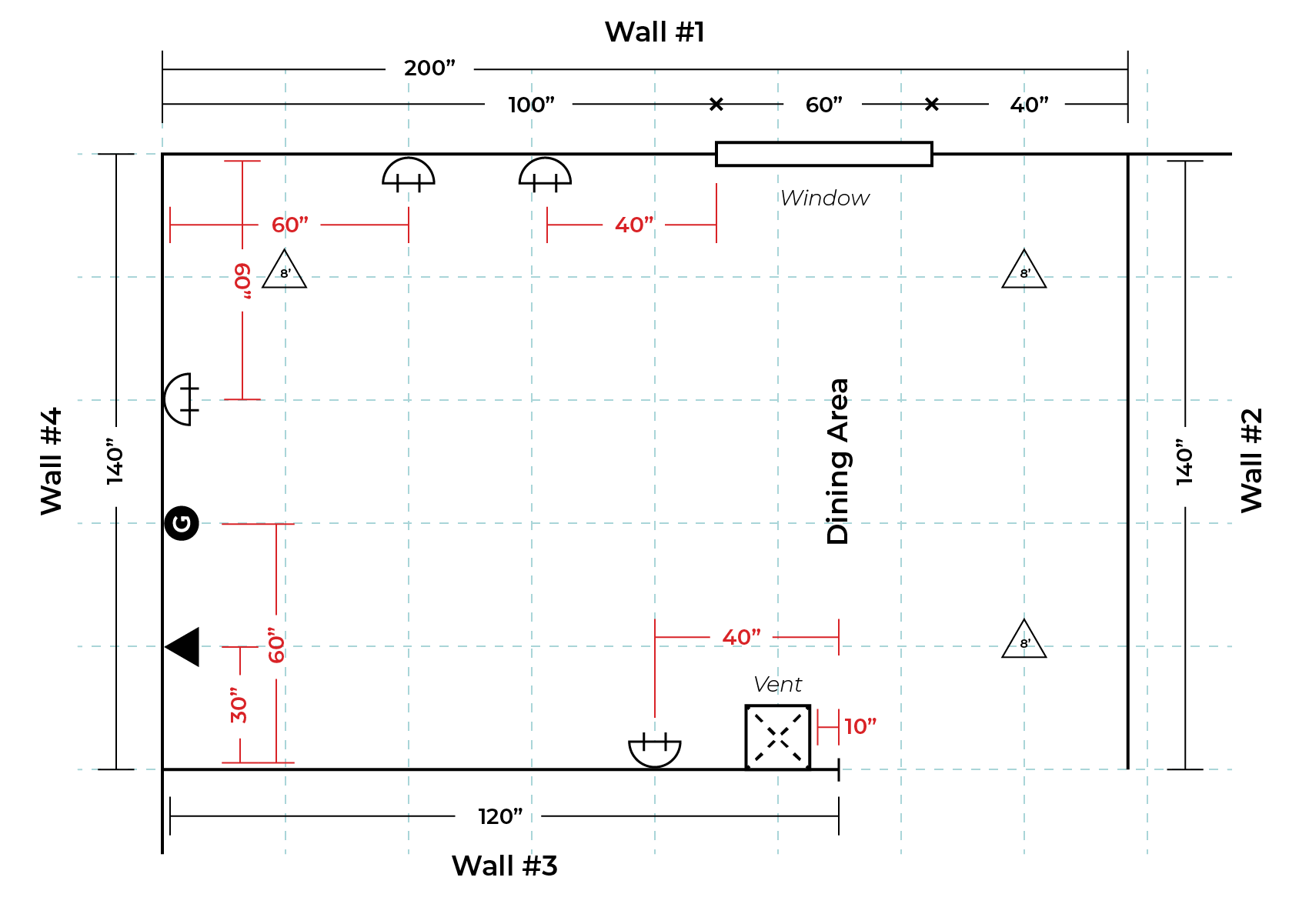To measure for kitchen cabinets, gather materials, create a floor plan, and measure walls and appliances. Accurate measurements are crucial for a successful installation.
Whether you’re renovating or installing new cabinets, taking precise measurements is essential for ensuring a seamless fit. By following a few simple steps and using the right tools, you can confidently measure your kitchen space to determine the cabinet sizes that will work best for your layout and design preferences.
Getting accurate measurements upfront can save time and prevent unnecessary adjustments during the installation process. Whether you’re a seasoned DIY enthusiast or hiring a professional, knowing how to measure for kitchen cabinets is a fundamental aspect of any successful kitchen remodeling project.
Essential Tools For Accurate Measurements
When it comes to measuring for kitchen cabinets, having the right tools is essential for accurate measurements. One important tool to have is a measuring tape. It is important to choose the right measuring tape that is suitable for your needs. A tape measure with both metric and imperial measurements is ideal for versatility. Additionally, having a level is also important to ensure that your cabinets are installed correctly and are level. A level helps to ensure that your measurements are accurate and that your cabinets will be installed properly. By using the right tools and taking accurate measurements, you can ensure that your kitchen cabinets will fit perfectly in your space.

Credit: kitchencabinetkings.com
Creating A Detailed Floor Plan
When measuring for kitchen cabinets, creating a detailed floor plan is essential. Start by sketching the basic layout of your kitchen, including any existing elements such as windows, doors, and appliances. Measure the walls, taking note of any segments or areas that require special attention. Don’t forget to measure the back wall as well.
Incorporate existing elements into your floor plan, ensuring accurate measurements. Measure and record the dimensions of appliances, outlets, and your kitchen island if applicable. This will help you determine the size and placement of your cabinets.
Wall Measurement Techniques
When measuring for kitchen cabinets, it is crucial to determine the wall lengths accurately. Start by measuring the full length of each wall and record the measurements carefully. Take into account any corners and angles, measuring from the longest point to the perpendicular wall. For corners, measure from the outer edge to the adjacent wall, ensuring precise calculations. Additionally, when measuring for appliances, outlets, and obstructions, note down their dimensions to ensure a comprehensive plan. By following these techniques, you can ensure precise measurements for your kitchen cabinets.
Measuring Individual Sections
When measuring for kitchen cabinets, it is important to break down the wall measurements into individual sections. This is especially crucial when dealing with varied wall segments. Start by gathering your materials and creating a floor plan. Measure the walls and record the segments. Don’t forget to measure the back wall and consider how to measure a wall with no windows or doorways. Additionally, measure and record the dimensions of your appliances, outlets, and kitchen island. Double check your measurements and floor plan to ensure accuracy. By following these steps, you can easily measure for your kitchen cabinets and ensure a proper fit.
Navigating Obstacles And Fixtures
When measuring for kitchen cabinets, gather your materials and create a floor plan. Measure the walls, segments, and the back wall. Don’t forget to measure appliances, outlets, and the kitchen island.
To measure for kitchen cabinets, start by gathering the necessary materials such as a measuring tape and a floor plan. Measure the full length of all kitchen walls in inches and record them on your floor plan. Measure the ceiling height and check for any additional obstructions such as windows, doors or electrical outlets. When measuring around windows and doors, measure from the edge of the window or door frame to the corner of the wall. For dealing with electrical outlets, measure from the floor to the center of the outlet and record the distance from the nearest wall. Measure appliances and island and double check your list and floor plan. With these steps, you can accurately measure for your kitchen cabinets.
Credit: www.pinterest.com
Incorporating Appliances Into The Plan
Measuring for kitchen cabinets is an essential part of the kitchen renovation process. When incorporating appliances into the plan, it’s crucial to size them correctly to ensure spacing for functionality and design. Common kitchen appliances such as refrigerators, stoves, and dishwashers have varying sizes, and measuring them accurately is essential to ensure a seamless fit.
When measuring for appliances, it’s best to measure the width, height, and depth. To ensure spacing for functionality, it’s also crucial to consider the swing of the appliance doors and any additional clearance needed. Properly measuring and incorporating appliances into the plan will ensure the kitchen renovation is a success.
Island And Counter Considerations
When measuring for kitchen cabinets, it is important to consider island and counter measurements. Balancing space and utility is key to creating a functional and aesthetically pleasing kitchen layout.
Start by gathering your materials and creating a floor plan. Measure your walls, including any segments and the back wall. If there are no windows or doorways, measure a wall without them. Don’t forget to measure and record the dimensions of your appliances, outlets, and island.
When measuring the island, ensure that it fits well within the space and allows for easy movement around the kitchen. Consider the height, width, and depth of the island, as well as any additional features like seating or storage.
By following these guidelines and accurately measuring your kitchen, you can ensure that your cabinets will fit perfectly and optimize the functionality of your space.
Final Checks Before Ordering
Before ordering kitchen cabinets, review your measurement list carefully. Confirm the details with professionals to avoid any errors.

Credit: www.youtube.com
Frequently Asked Questions
How Do I Know What Size Kitchen Cabinets I Need?
To determine the size of kitchen cabinets you need, follow these steps: 1. Gather your materials and create a floor plan. 2. Measure the length of all kitchen walls in inches. 3. Measure the ceiling height. 4. Check for additional obstructions.
5. Measure your appliances and kitchen island/bar. 6. Double-check your measurements and floor plan. By following these guidelines, you can accurately determine the size of kitchen cabinets required for your space.
How Do You Measure For Kitchen Cabinet Replacement?
To measure for kitchen cabinet replacement, gather materials, create a floor plan, measure walls, segments, and back wall. Also, measure appliances, outlets, and island. Double-check your list and floor plan for accuracy.
How To Calculate Kitchen Cabinet?
To calculate kitchen cabinets, start by drawing a floor plan and recording your horizontal and vertical measurements. Mark any obstructions and place appliances and utilities. Choose your kitchen layout and shop for cabinets. Make sure to measure the length of the back of each side of the cabinet.
Lowe’s and other stores offer in-home measurement services.
Does Lowes Measure For Kitchen Cabinets?
Yes, Lowes provides measurement services for kitchen cabinets through their independent installers. The measurement cost is deducted from the purchase price.
How Do I Measure My Kitchen For Cabinets?
To measure your kitchen for cabinets, start by creating a floor plan. Measure the walls, segments, back wall, and the space for appliances and outlets. Record these measurements accurately.
Conclusion
Measuring for kitchen cabinets may seem like a daunting task, but with the right tools and steps, it can be done easily. By following the guidelines outlined and taking accurate measurements, you can ensure that your new cabinets fit perfectly in your kitchen.
Remember to double-check your measurements and consult with a professional if needed. With these tips, you’ll be well on your way to a beautiful and functional kitchen!

